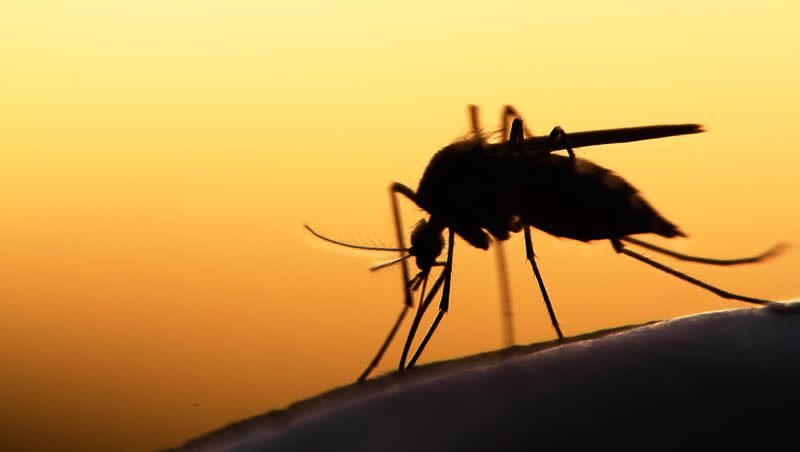Why more than 5 billion people are expected to contract malaria by 2040

As many as 5 billion people could contract malaria by 2040, according to a new projection that says “seasonal changes benefit disease-carrying mosquitoes.”
A Washington Post analysis of climate modeling shows that “the threat posed by malaria stands to soar as the planet warms because of longer transmission seasons, more frequent and severe extreme weather events and the migration of malaria-carrying mosquitoes to new latitudes and altitudes.”
The World Health Organization calls malaria a life-threatening mosquito-borne illness and said there were 247 million cases worldwide in 2021, with 619,000 deaths. It isn’t contagious; rather, the mosquito — usually an infected female Anopheles mosquito — may carry one of five types of parasites that get into the bloodstream when a mosquito bites someone.
Mild symptoms include fever, chills and headache. The truly terrible symptoms are extreme fatigue, confusion, seizures, dark or bloody urine, jaundice, abnormal bleeding and difficulty breathing. Malaria can lead to kidney failure and it can put someone in a coma.
WHO says infants, children younger than 5, pregnant women, travelers and people with HIV or AIDS are at higher risk of severe symptoms. Three-quarters of infections are in those younger than 5.
While African and South American nations could be most affected, the United States is not immune. “In the United States, warming temperatures and increased rainfall are projected to lengthen malaria transmission seasons across the South,” per the analysis, which notes that malaria was once endemic, then was eliminated in North America and Europe in the mid-1900s as public health experts figured out how to combat it.
The Centers for Disease Control and Prevention says most cases in the U.S. are “imported cases,” resulting when someone travels to a country where the disease spreads.
But mosquitoes can be infected by biting someone who has malaria and can transmit it to someone else they bite. Warming temperatures and changing weather patterns could increase the risk over time.
“Warming temperatures and increased rainfall are projected to lengthen the period when malaria could propagate across the South. Portions of North Carolina, Tennessee and Virginia could see transmission seasons of at least four months by 2070,” the article said. It notes that “more than 200 million people, many without acquired immunity, could be at risk.”
Hard-hit Africa
The Post says some parts of the world could see disease transmission season increase by up to five months by 2070. In sub-Saharan Africa, some regions now see transmission year-round and higher altitude and latitude areas are being impacted.
It used to be that mosquitoes were less prevalent in mountainous or northern areas that were typically cooler. That’s less true as those areas become warmer and thus more friendly to mosquitoes. That includes the highlands of African countries where people have little resistance, the Post says, noting mosquito seasons are getting longer. Examples also include the Andes Mountains of Colombia, Peru and Ecuador, which typically did not see malaria at all.
The World Health Organization said globally malaria cases have gone up over the last six years, with a devastating impact on Mozambique and other countries where malaria is endemic.
“Malaria carried by these mosquitoes is part of an accelerating wave of sickness and death due to climate change. Humanity is increasingly confronted with lethal heat, malnutrition linked to ever more common droughts and floods, and illnesses borne by mosquitoes and ticks — including dengue, Zika and chikungunya,” the Post reported.
The Washington Post analysts created a model showing geographic areas that might be good hosts for mosquitoes and parasites to breed and over what time period in a year. They used a set of three peer-reviewed models that eight scientists from European medical and research institutions published in the journal the Lancet Planetary Health. Each accounted for different variables, including temperature, precipitation, humidity, local water, mosquito populations and immunity to malaria human population in an area might have developed.
Vaccines to alter risk
The resulting dire prediction comes at a time when two vaccines are available. “This killer disease could now be eliminated, but will the world pull together to make it happen?” an editorial in Nature asks.
It notes that half a million children die of malaria each year — and the projection for 2023 is that malaria worldwide will kill more than 600,000 people.
Michael Charles, chief executive of the RBM Partnership to End Malaria, told Nature that a child dies of malaria every minute.
Per Nature, “The third of the United Nations Sustainable Development Goals includes a target to eliminate malaria. The COVID-19 pandemic reversed gradual but discernible progress in this respect. Worldwide, malaria deaths fell from 897,000 in 2000 to 568,000 in 2019. But they increased to 625,000 in 2020, and indications are that they have stayed at similar levels since.”
Ending malaria includes not just making and distributing vaccines, but also access to clean water, products like mosquito netting in malaria-prone areas and other preventive measures.
In July, the World Health Organization announced 12 African countries were to receive about 18 million doses of the Mosquirix malaria vaccine over the next two years, starting in early 2024, according to Precision Vaccinations.
And another vaccine, called R21, has recently been approved.

